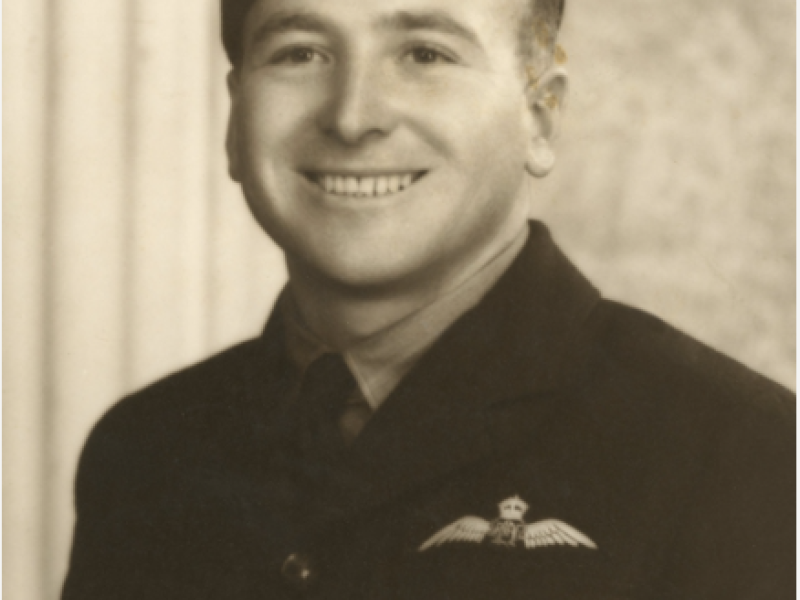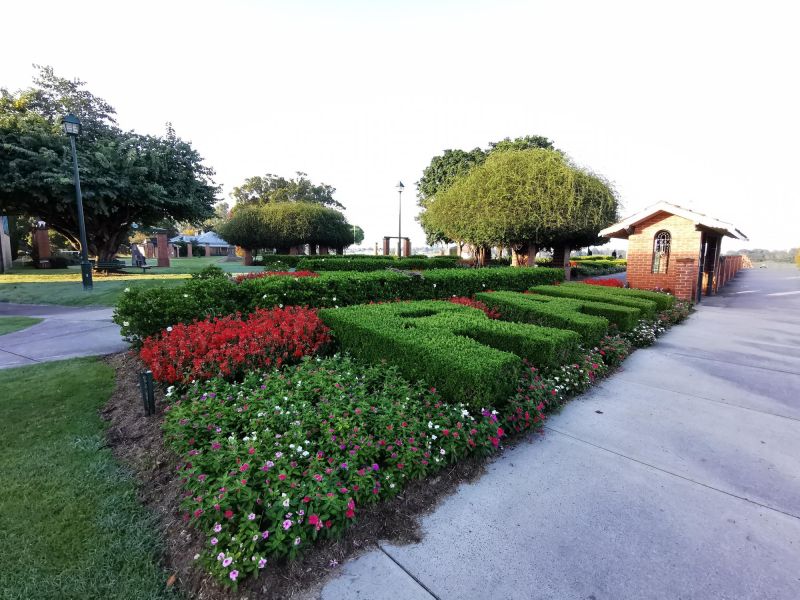Flight Sergeant John McAulay Morrison, No. 75 Squadron, RAAF
John “Jack” Morrison was born on the 1st of February 1918 in Lismore, New South Wales, the son of Daniel and Margaret Morrison.
He grew up in Grafton in the Northern Rivers region of NSW, where he attended Grafton High School before becoming as an estate manager.
Jack and his five brothers were involved in local sports including football and tennis, and the Yamba Surf Club. All would go on to serve during the Second World War.
In April 1940, 22-year-old Jack Morrison applied to join the Royal Australian Air Force. Not long afterwards, on the 22nd of May, he married Merle Eileen Emery. A daughter, Margaret, later followed.
The newly wed Morrison was called up four months later, and on the 16th of September 1940, enlisted in the Royal Australian Air Force.
He entered training as a pilot, and on the 4th of June 1941, embarked from Sydney overseas. Arriving in the United Kingdom in August, he was attached to the Royal Air Force. In late September, he joined No. 57 Operational Training Unit, based at Hawarden Airport in Wales, where he trained as a fighter pilot, flying Spitfires.
In early April 1942, Morrison was transferred to No. 452 Squadron, based at RAF Andreas, on the Isle of Man – the first Australian squadron formed in Britain during the Second World War. No. 452 Squadron also had British and Commonwealth personnel, and a number of Polish pilots. In June the squadron withdrew from operations in Britain to return to Australia.
By then, Morrison had been featured in newspapers, with reports that his Spitfire had been involved in a fight with three Messerschmitts. After parts of his rudder has been shot away, one report stated that “young Morrison hung on for 50 miles in his chase after the ‘Messers’ leading machine, and finally had the satisfaction of sending machine and pilot crashing into the sea in a mass of flames.”
Morrison arrived in Melbourne in early June 1942, and by the end of the month had been transferred to No. 75 Squadron, a fighter unit which flew P-40 Kittyhawks.
No. 75 Squadron had been formed in March 1942 to counter the threat to Allied positions in New Guinea. By the time that Morrison joined, the squadron had been in action over Port Moresby or Lae almost every day during late March and April, usually outnumbered by Japanese aircraft.
Having returned to Australia in May, the squadron was first located at Townsville and later moved to Kingaroy in Queensland. In late July the unit returned to New Guinea, where it would take part in the battle of Milne Bay. Morrison, however, would not live to see the battle.
On the 28th of June 1942, he was killed when the P-40E Kittyhawk he was flying failed to recover from a spin and crashed.
He was 24 years old.
Morrison was survived by his wife and baby daughter. Today his remains lie in Grafton Cemetery.
Duncan Beard, Editor, Military History Section

 Australian War Memorial
Australian War Memorial